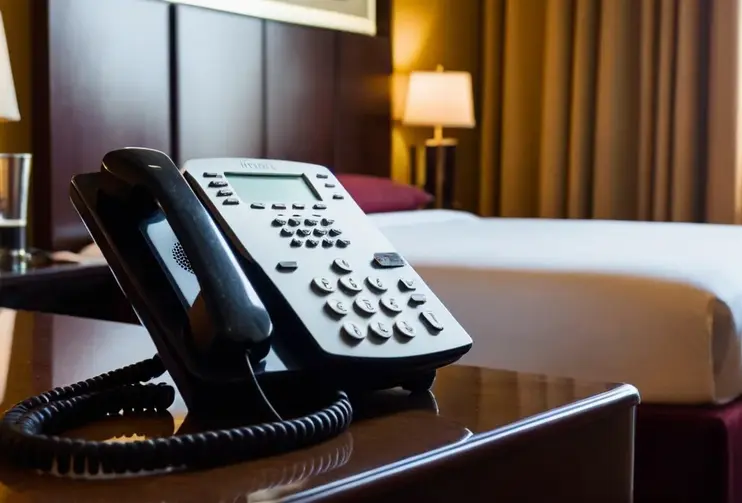Does your landline phone seem unreliable lately? Do calls get choppy or disconnect? When you pick up your receiver, do you hear no dial tone at all? Strange noises on phone lines point to potential problems.
Before calling the phone company for repairs, it helps to run some easy tests first. Checking your in-house wiring and connections can reveal issues you can fix yourself without a technician’s costly visit. Or tests could confirm bigger line troubles needing professional attention.
Let’s review what DIY test steps you can take to get to the bottom of possible home phone line problems.
Start With Your Phones and Inside Wiring
First, inspect your actual telephone devices and all related cabling inside your house. Several routine checks can detect basic problems you can remedy in minutes.
 Look for Off-Hook Phones
Look for Off-Hook Phones
Walk through your home to verify all handsets properly sit in their cradles. It’s easy to accidentally knock a phone off-hook so it seems like you have no dial tone.
Check Cable Connections
Examine the power adapter and telephone cables connecting each phone to outlets. Loose plugs or fraying cords can cause functionality lapses until you firmly re-insert or replace them.
Confirm Proper Power
For cordless phones, a dead battery prevents the handset and base from working correctly. Try charging overnight before further troubleshooting.
Inspect All Line Splitters
Do you notice any phone line splitters unplugged or removed? All phones and devices need splitters installed to filter the line properly. Without them, phone performance suffers.
Isolate Issues By Swapping Devices
If phones pass the above tests, bring in a device from another room to swap with the phone exhibiting issues. Cordless phones are convenient but more prone to glitches—use a reliable corded phone for testing when possible.
No Dial Tone: Does another phone work fine when plugged into the problematic outlet? If yes, the original device likely has an internal hardware or wiring problem. Try replacing cords and/or batteries in cordless units first before replacing an entire phone.
Ongoing Issues: Do issues persist when using another phone? This indicates wider wiring problems in the outlet, walls, or overall line—not the fault of one phone device. Move on to testing connections.
Evaluate at the Main Telephone Box
The “master socket” where external lines enter your house is key for evaluations. Bypass any splitters, extras, or other indoor wiring here by connecting your phone directly.
Show Image
Open the box to access the test jack. Plug in your phone and listen for clean dial tone. If so, your external wiring seems fine, suggesting indoor wiring issues instead. No change points to external line troubles.
Old-Style Mounted Boxes
If you have an older enclosed box mounted on your house exterior, look for the “test jack.” Open any latches or screws to uncover it among the color-coded wiring board inside. Use this jack as you would an interior box’s test socket.
Show Image
Check All Your Indoor Outlets
Since you isolated external wiring at the demarcation box, issues signify your interior phone wires or jacks have complications if those persist.
 Listen at Each Jack
Listen at Each Jack
Unplug every phone in the house. Then take your test phone around to plug into all jacks to check for dial tone scratchiness or distortion.
Inspect Wiring
Open any phone or junction boxes to look for loose, tangled, or touching wires that could cause shorts. Any nicks in insulation also expose wires to contact that creates infrastructure problems over time as wiring wears.
Can’t Resolve Things Yourself? Call In Pros
For widespread or complex issues inside walls impossible to isolate yourself, professional phone technicians have specialized gear to measure voltage and other signal information throughout home lines. Their testing quickly pinpoints odd readings revealing shorts and exact locations of trouble areas needing repairs you can’t tackle solo.
Getting clearance that the root issue doesn’t stem from your own equipment avoids hefty fees just for technicians to walk in your door. So first exhaust basic testing steps covered here. Ensure phones work properly and connections sit tightly in place. But don’t let problems linger—faulty lines left unchecked can fail completely. If self-checks don’t uncover solutions, seasoned experts take over from there!

 Look for Off-Hook Phones
Look for Off-Hook Phones Listen at Each Jack
Listen at Each Jack